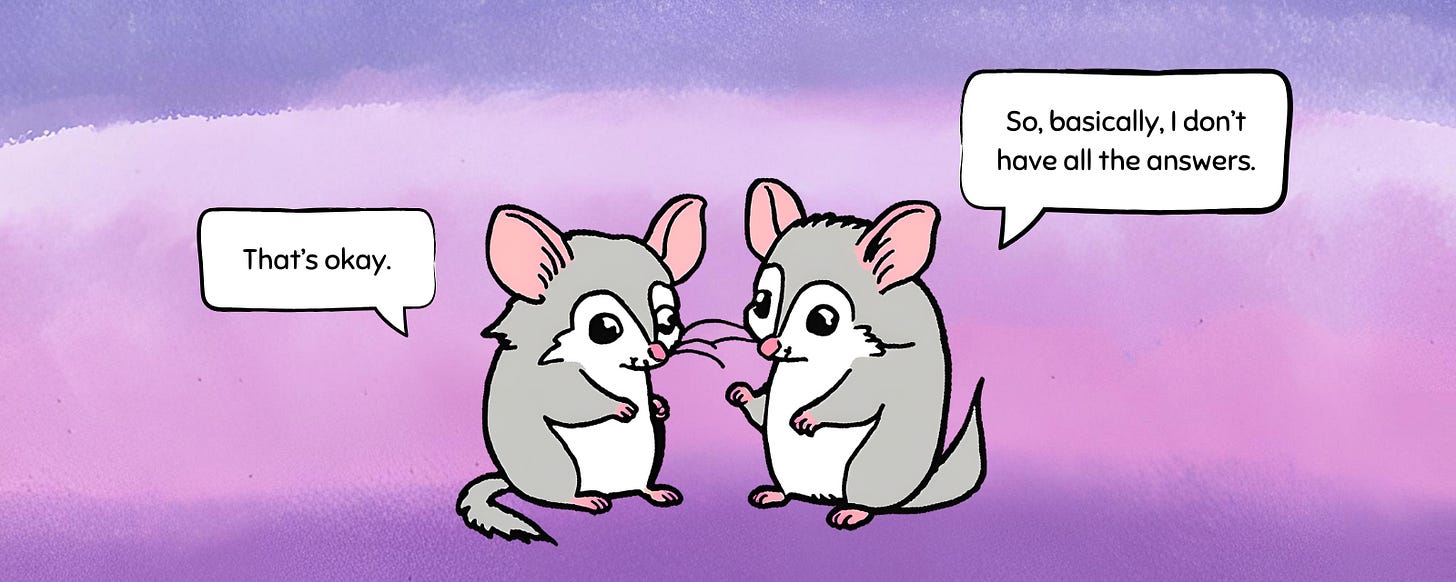Why Intersectionality Matters More Than Ever
Getting Ready for Bisexual Killjoy Season 3
Season 3 of Bisexual Killjoy is almost here, and this time, we’re diving deep into intersectionality. And I’ll be honest: I feel a little nervous about it. Not because intersectionality isn’t real or relevant—it’s happening all around us, shaping every aspect of our lives whether we talk about it or not. But talking about it? That’s another story.
And hey, if the word “intersectionality” makes you feel like you need to have a PhD in social justice just to say it out loud, don’t worry, you’re not alone. I’m not here to be an expert (newsflash: I’m not); I’m here to ask questions, learn alongside you, and make space for the voices that should be centered in these conversations. So, what do we mean by intersectionality?
Definitionally, it is a term coined by legal scholar Kimberlé Crenshaw to describe how different forms of oppression overlap and compound. But the challenge is that intersectionality isn’t just a concept—it’s an experience. It’s not a tidy framework with clear-cut solutions. It’s messy. It’s personal. It forces us to confront the ways oppression doesn’t just happen to us but sometimes through us—how we hold privilege in some ways while being marginalized in others. It’s also an ongoing conversation, not a box we can check once we “get it.”
And honestly, there’s fear in that. Fear of getting it wrong. Fear of missing something important. Fear of realizing how much I still have to learn. Because while I think about intersectionality constantly, living at the crossroads of queerness, gender, class, and more, I don’t always have the language for it. I don’t always know how to name what’s happening in the world or even in my own life. And I suspect I’m not alone in that.
So, if the word intersectionality feels intimidating, I get it. But the thing is, whether we name it or not, it’s already shaping our lives. The way bi+ people experience oppression isn’t a one-size-fits-all reality. A disabled bi+ person doesn’t move through the world the same way as an able-bodied bi+ person. A Black bi+ person faces different challenges than a white bi+ person. And while these experiences overlap, they don’t cancel each other out—they build on each other in ways that make life more complicated, more nuanced, and sometimes, more isolating.
This season, we’re not just going to talk about intersectionality in theory. We’re going to talk about what it looks like in practice. How do race, disability, class, gender expression, and other identities shape the way we experience bi+ identity? How do they impact our access to community, our visibility, and the kinds of support (or gatekeeping) we receive?
We’ve lined up some incredible guests like Dr. Mimi Hoang and Dr. Zori Paul who will share their experiences and expertise, and we’ll also be bringing in discussions about how intersectionality shows up in media, activism, and relationships. Expect raw conversations, hard truths, and—because this is still Bisexual Killjoy—plenty of laughs along the way.
If you feel like this is a huge, complicated topic, good! It is. And we’re not here to simplify it. We’re here to sit with the discomfort, ask hard questions, and listen more than we speak.
So, what questions do you have? What intersections of bi+ identity have impacted your life the most? Drop your thoughts in the comments or send us a message—we want to hear from you as we kick off this season of Bisexual Killjoy. We’ll see you on March 2.
In solidarity,
Bailey




So very excited for the upcoming season!!!! Intersectionality is so important to so many conversations!!!!